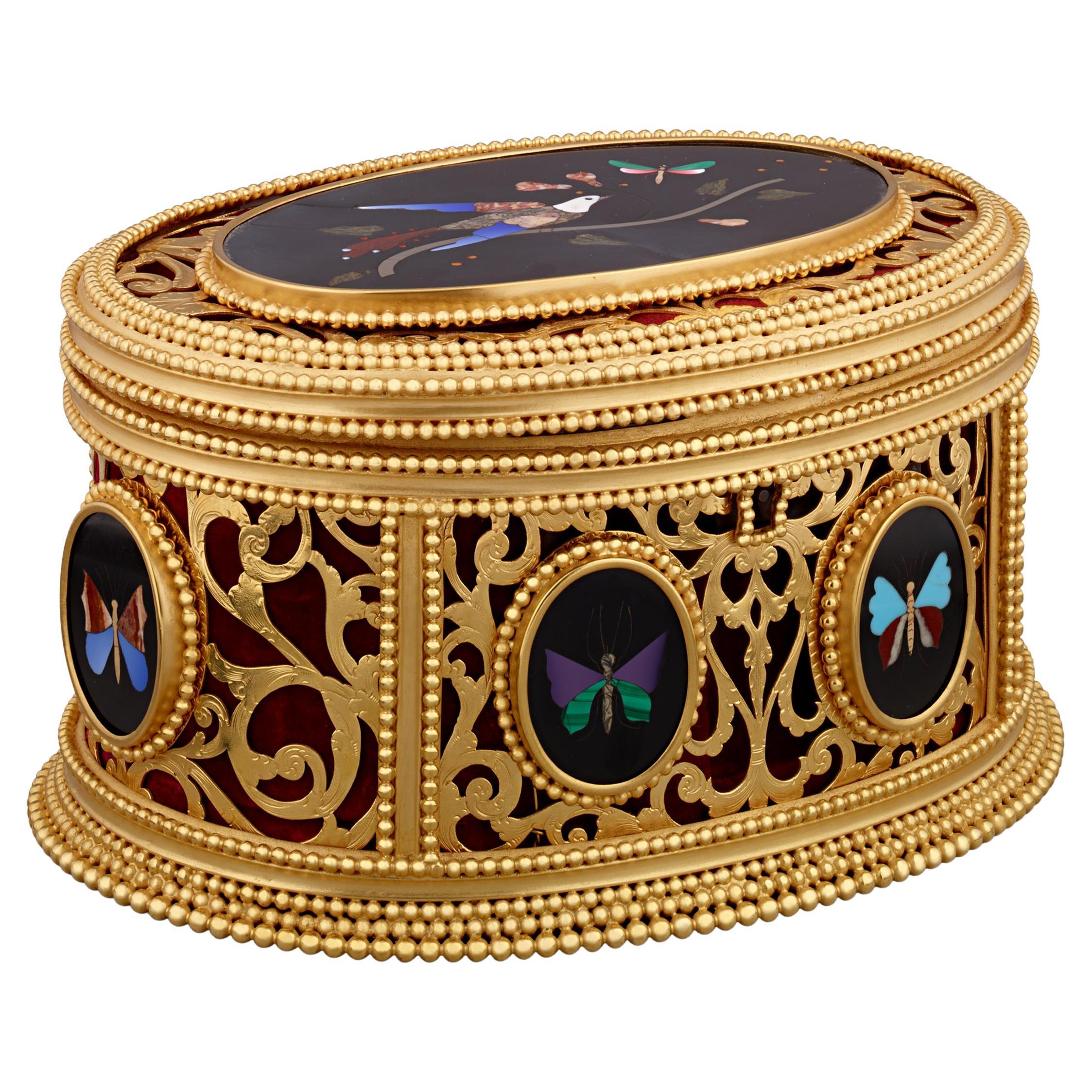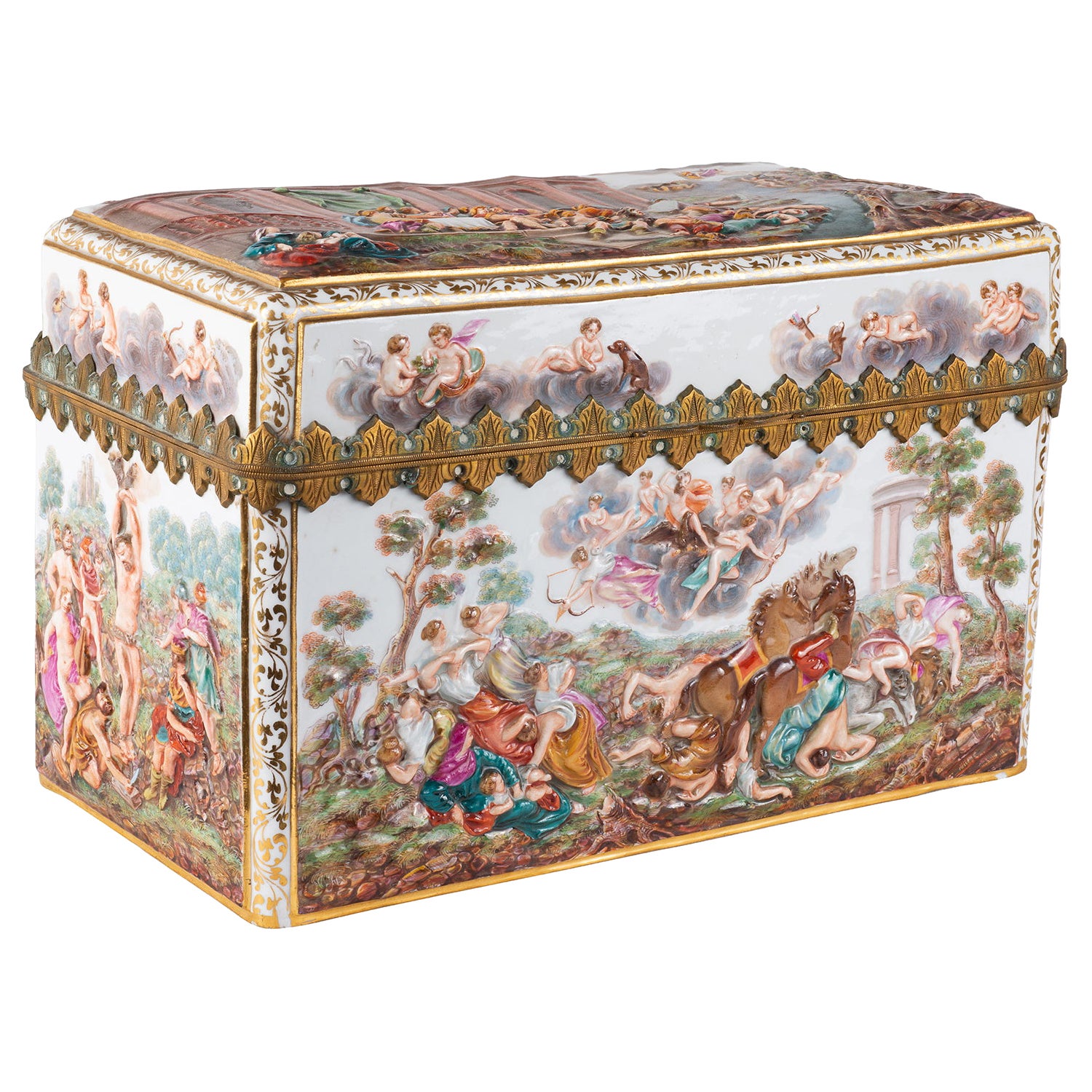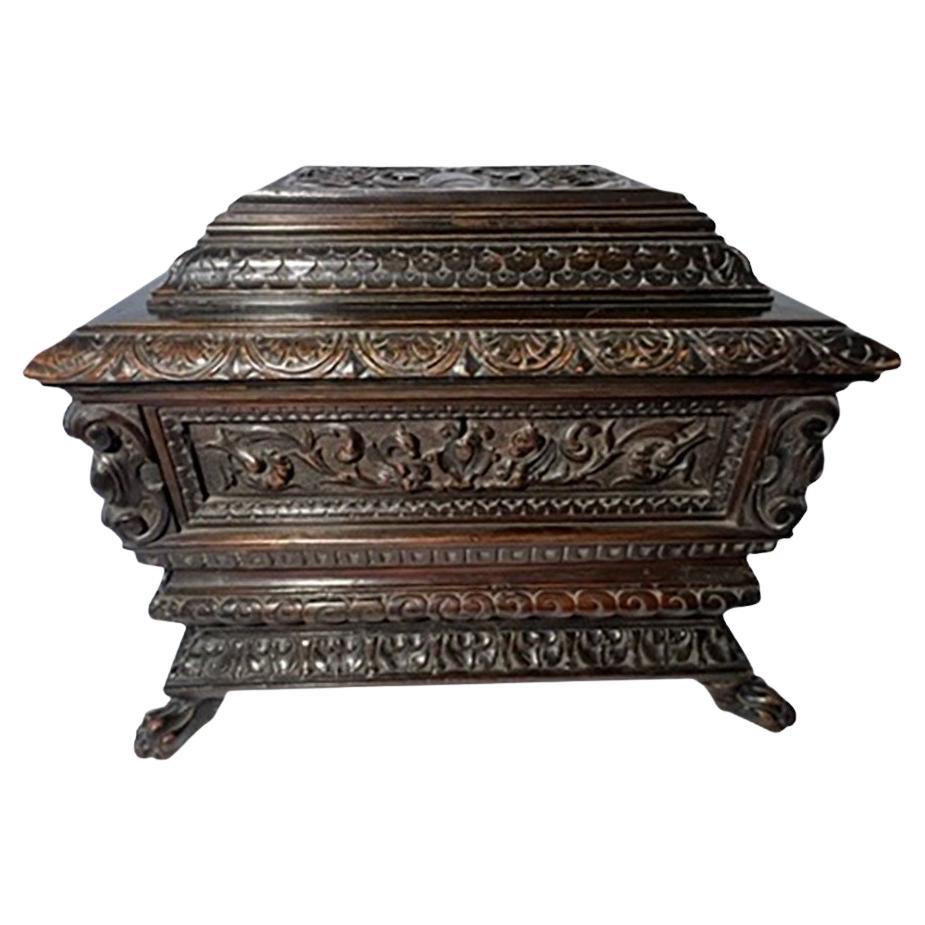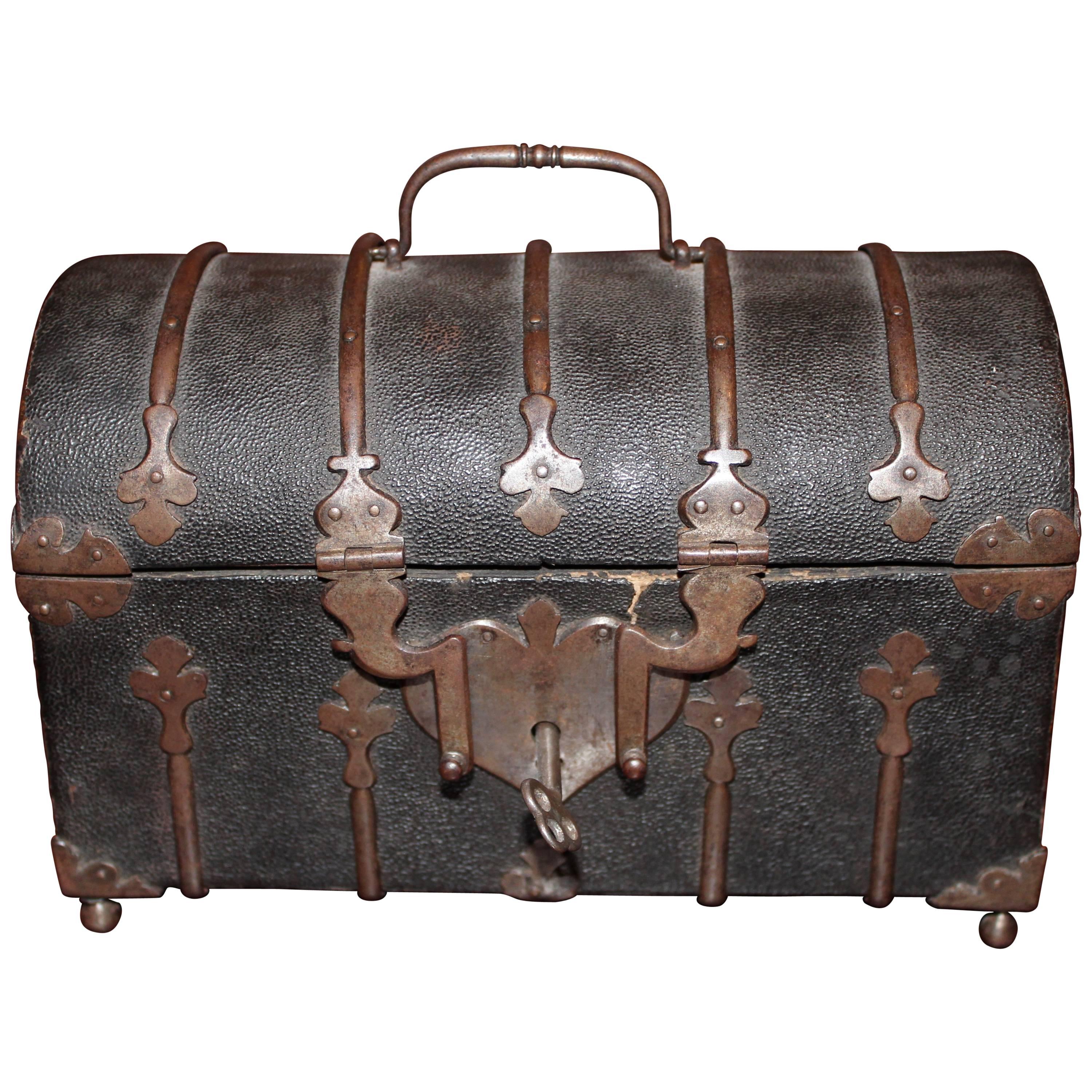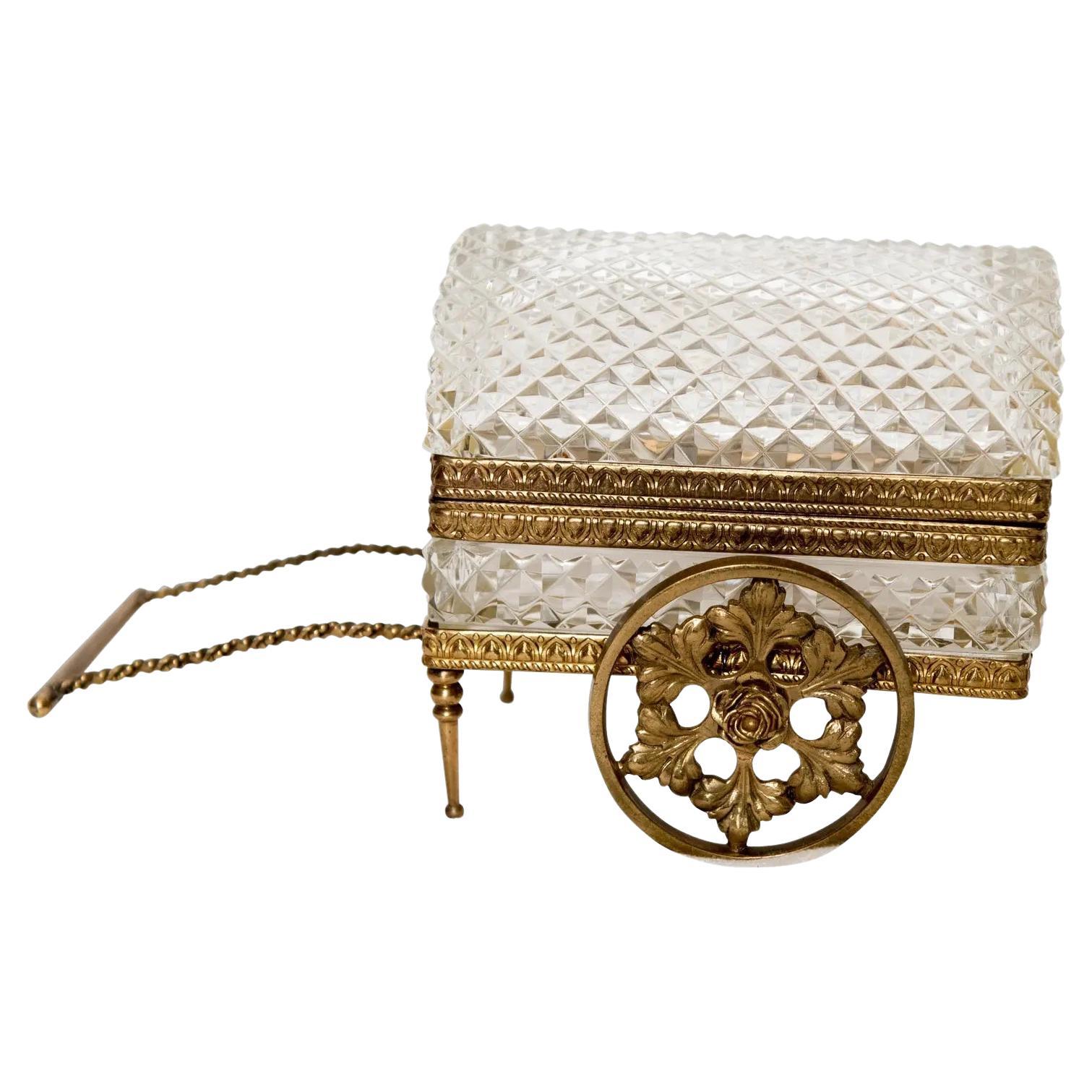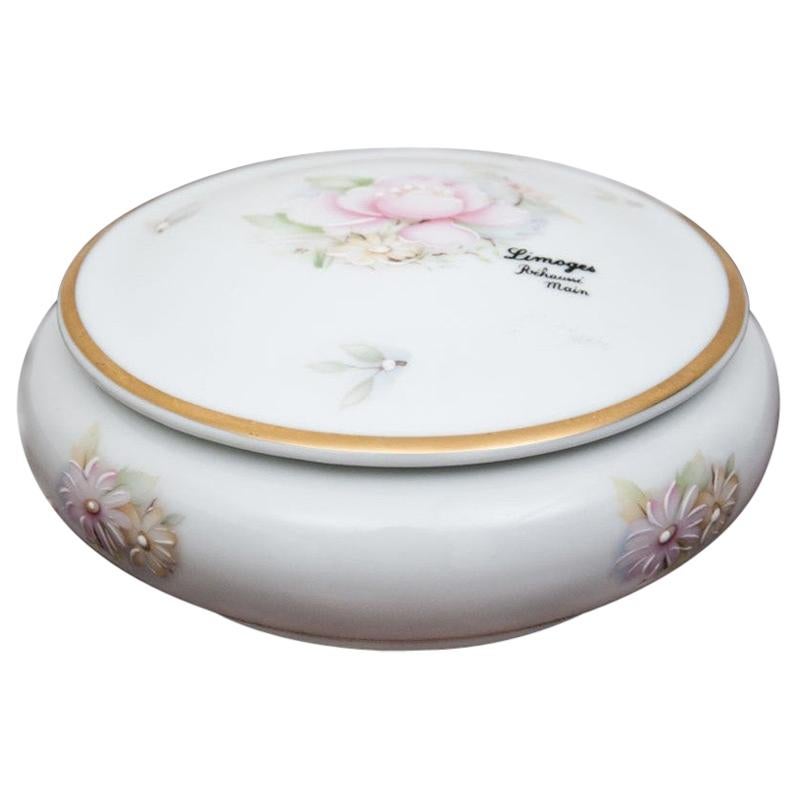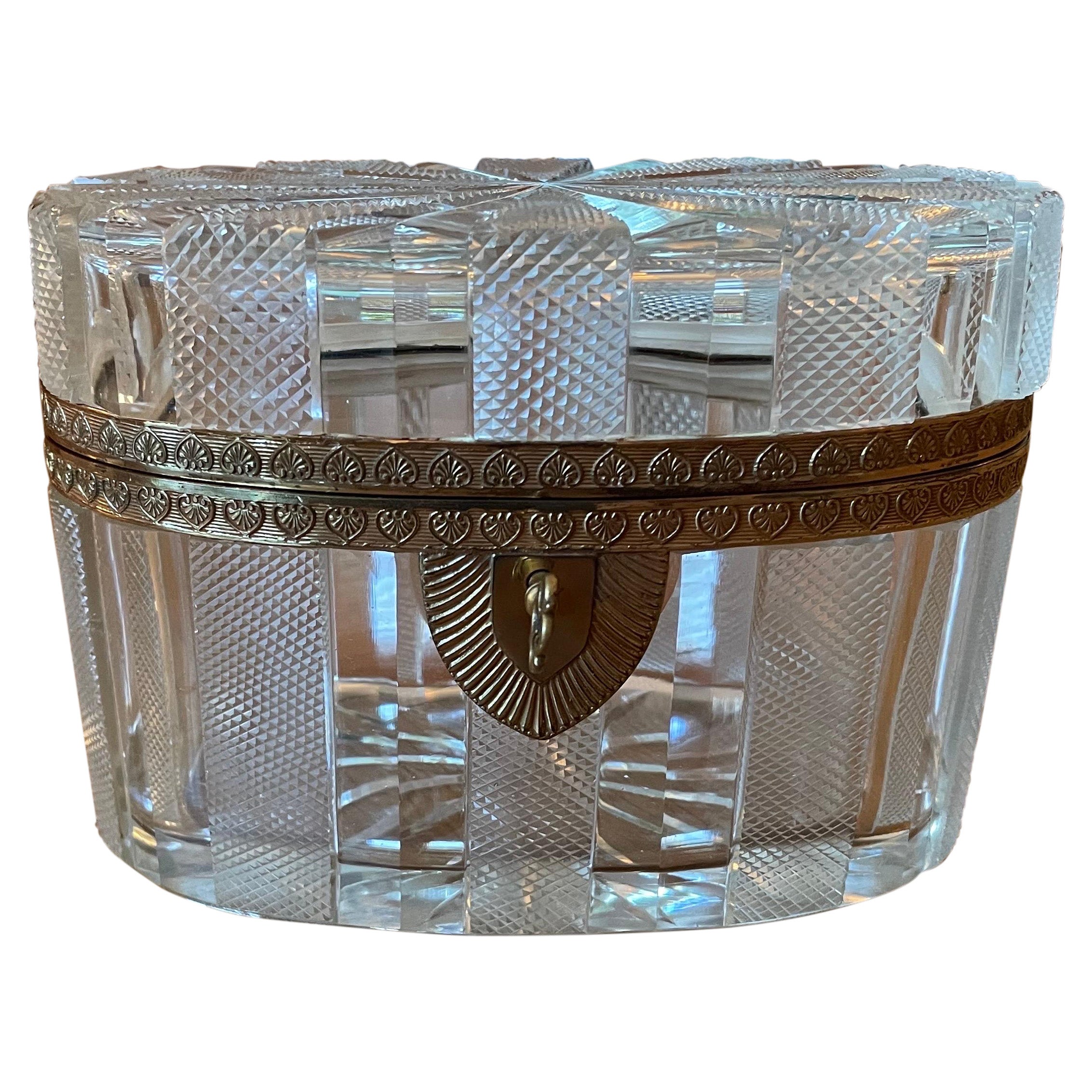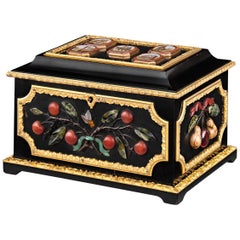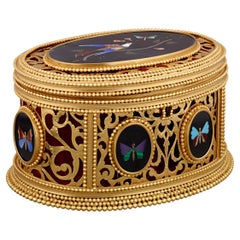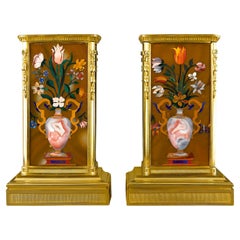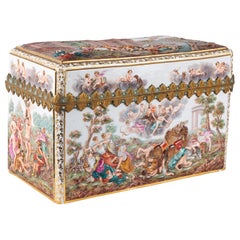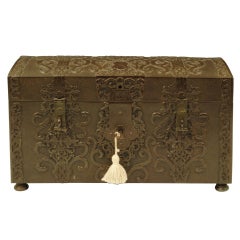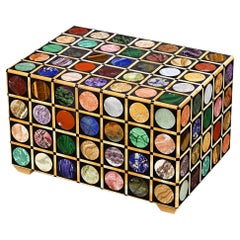
Pietre Dure Specimen Casket
View Similar Items
Want more images or videos?
Request additional images or videos from the seller
1 of 6
Pietre Dure Specimen Casket
About the Item
- Dimensions:Height: 7.88 in (20.02 cm)Width: 12.63 in (32.09 cm)Depth: 9 in (22.86 cm)
- Style:Neoclassical (In the Style Of)
- Materials and Techniques:
- Period:
- Date of Manufacture:19th century
- Condition:
- Seller Location:New Orleans, LA
- Reference Number:Seller: 31-82471stDibs: LU891137588842
About the Seller
5.0
Recognized Seller
These prestigious sellers are industry leaders and represent the highest echelon for item quality and design.
Established in 1912
1stDibs seller since 2010
93 sales on 1stDibs
Typical response time: 7 hours
More From This SellerView All
- Micromosaic and Pietre Dure Grand Tour CasketLocated in New Orleans, LAThe time-honored decorative techniques of pietre dure and micromosaic are combined in this rare and exceptionally-crafted Grand Tour casket. Serving as a m...Category
Antique 19th Century European Greco Roman Decorative Boxes
MaterialsStone, Bronze
- Pietre Dure And Doré Bronze Box By TahanBy Jean-Pierre TahanLocated in New Orleans, LACrafted by Jean-Pierre-Alexandre Tahan, the esteemed cabinetmaker to Napoléon III, this jewelry box is a remarkable example of 19th-century European artistry. The box, shaped in doré...Category
Antique 19th Century French Empire Jewelry Boxes
MaterialsStone, Bronze
- Russian Malachite and Pietre Dure PlinthsLocated in New Orleans, LAThe exquisite art of pietre dure is at its absolute finest in this spectacular pair of Russian ormolu and malachite plinths. True works of art of the Restauration period, these plinths each feature a matching pietre dure mosaic crafted of the finest stones, all chosen to create a sense of depth and dimensionality in the final work. Depicting an onyx vase with tulips, roses, daffodils, magnolia and other flowers, these pietre dure panels are among the finest examples of this ancient art we have seen. The pietre dure is complemented by malachite panels of the highest quality, exhibiting exceptional depth through its extraordinary cellular structure. Malachite is one of Russia’s most precious stones, and its presence in these plinths indicates commission and ownership by an individual of considerable status. Mounted in an excellent stepped ormolu base, these plinths originally served as bases for vases or candelabra. The overall execution and appearance of these plinths is very characteristic of the taste associated with the immensely wealthy collector Nicolas Demidoff. As early as 1806, Demidoff had commissioned the Parisian goldsmith Henri August to supply a guéridon; in 1819, he ordered famed French bronzier Pierre-Philippe Thomire to supply mounts for a massive malachite vase (now in the Metropolitan Museum of Art, New York), as well as a console table with legs in the form of Nike. Other commissions included a table given as a gift to Grand Duke Leopoldo II of Florence, now in the Pitti Palace. Demidoff eventually settled in Florence in 1822 and became Russian minister to the Tuscan Court. Elevated to the rank of Count of San Donato by the Grand Duke, he built a magnificent villa at San Donato on the site of lands formerly owned by the Medici. The villa was later inherited by Anatole, his son, Prince of San Donato, and there are records which confirm transactions he had with the Opificio delle Pietre Dure. The 19th century proved to be the golden age of Russian malachite. The stone became a sign of prestige and a token of wealth, so much so that Russian papers of the time wrote: "To afford having a big piece wrought in malachite is synonymous to owning diamonds." Year after year the Russian (Romanov) treasury paid increasingly unreasonable prices to hoard the best malachite, much of which went into Romanov palaces and extravagant objets d'art. The Hermitage Museum possesses a collection of over two hundred examples of this “palatial” malachite...Category
Antique 19th Century Russian Pedestals
MaterialsMalachite, Ormolu
$168,500 / set - Grand Ducal Pietre Dure Console TablesBy Andrea BrustolonLocated in New Orleans, LAAmong the most beautiful examples of hardstone artistry that have ever entered our collection, these important Grand Ducal pietre dure console tables are in a class all their own. Their powerful architectural elegance, impressive size and rarity make them two of the finest hardstone masterpieces ever created and quite possibly the greatest pair of pietre dure tables in existence. With their naturalistically rendered flowers and birds, these tabletop panels showcase the particularly fine quality craftsmanship of the Grand Ducal workshops in Florence during the first quarter of the 17th century. Grand Duke Ferdinando I de Medici, one of the most important personages in the annals of art history, established the Grand Ducal Workshop in 1588. The workshop specialized in the art of pietre dure developed from the ancient art of opus sectile, giving rise to the most luxurious and detailed examples of hardstone artistry ever produced. Its patrons were the Popes and Royals of Europe, and the quality of the objects produced in the workshop is without equal. Typically, because of the high level of workmanship the art form requires, pietre dure plaques were crafted in small sizes. The great majority of known examples of pietre dure are a fraction of the size of our grand tables. The combination of pietre dure and extensive use of other rare decorative hardstones such as lapis lazuli and pietra paesina or “ruin marble” meant that these tabletops were surely produced for a wealthy collector. The tables are further distinguished by their superbly carved bases by Andrea Brustolon, known as the “Michelangelo of wood.” Brustolon was a Venetian wood sculptor known for his exuberant and intricate Baroque furniture. His high Baroque style was influenced by his years studying in Rome, where he was exposed to the sculpture of Gian Lorenzo Bernini. Crafted in the early 18th century, these bases display Brusolon’s unmatched talent for both figural and foliate work, combining cupids, masks and oversized scrolling vines for a grand, ornate effect. Similar furnishings by Brustolon are held in museums worldwide, including the Victoria & Albert Museum, the National Museum of Scotland and the Metropolitan Museum of Art, while the Ca' Rezzonico Museum in Venice features an entire room dedicated to the sculptor. For approximately 150 years, these tables were part of the famed Stoneleigh Abbey collection owned by the Lord Leigh family. This renowned English country estate inspired Jane Austen to write Mansfield Park. Lord Leigh eventually sold the tables at Christie’s London in 1962, and the pair have stayed in the collection of the same Florentine family who purchased them from Christie's until we recently acquired them. Our tables are prominently pictured in the important Saul Levy book Il Mobile Veneziano del Settencento. The pietre dure plaques date circa 1625-1650. The decorative tops likely would have originally been sold with a pair of plain stone columns to display them, and Lord Leigh would have commissioned the custom bases from Brustolon circa 1714 when he added the impressive four-story fifteen-bay Baroque West Wing to Stoneleigh Abbey. A similar single Grand Ducal tabletop is in the United Kingdom’s National Trust Collection, and a smaller tabletop resides in Buckingham Palace. The flower and bird panels in our examples relate to the famous Badminton Cabinet...Category
Antique 17th Century Italian Baroque Side Tables
MaterialsWood
Price Upon Request - Musical Jewelry and Sewing CasketLocated in New Orleans, LAThis charming musical jewelry and sewing box is a work of sublime artistry. Almost certainly German or Austrian in origin and crafted of deep, ebonized...Category
Early 20th Century Austrian Other Decorative Boxes
MaterialsMulti-gemstone
- Napoleon III Ormolu Engraved CasketLocated in New Orleans, LAThis serpentine-shaped engraved ormolu jewelry casket is an exquisite Napoleon III work of art. Reminiscent of works by Alphonse Giroux, a renowned purveyor of fine goods to the Fren...Category
Antique 19th Century French Napoleon III Jewelry Boxes
MaterialsBrass, Ormolu
You May Also Like
- 19th Century Meissen Porcelain CasketBy Meissen PorcelainLocated in Brighton, SussexI very good quality 19th century Meissen porcelain lidded casket. It features a gladiatorial scene with the Emperor and Empress on the...Category
Antique 19th Century German Neoclassical Decorative Boxes
MaterialsPorcelain
- Carved Italian CasketLocated in Dallas, TXAntique turn of the century carved Italian mahogany casket in the style of a tomb with scrolls, acanthus leaves, bellflowers and a punch work background with winged griffons on the s...Category
Antique Early 1900s Italian Decorative Boxes
MaterialsSilk, Mahogany
$5,800 - French Metal CasketLocated in Lincolnshire, GBA decorative metal casket with timber lined interior, making it good for cigars!Category
Antique 19th Century French Decorative Boxes
MaterialsMetal
$1,930 - Domed Chagrin CasketLocated in West Chester, PAVery rare wood, iron and sharkskin domed casket on ball feet. Ornamented with iron strap work and double hasp lock. Silk damask interior. Ex collection of...Category
Antique Late 17th Century French Renaissance Decorative Boxes
$9,500 - Vintage German Crystal & Bronze Jewelry Casket CarriageLocated in Elkhart, INA very rare vintage cut crystal jewelry casket/carriage with bronze mounts. The domed crystal casket sits on a bronze carriage stand with turnin...Category
Early 20th Century German Neoclassical Decorative Boxes
MaterialsCrystal, Bronze
- Petite Antique French Neoclassical Gilt Bronze Jewel CasketLocated in Forney, TXA fine diminutive French Neoclassical ormolu gilded metal jewelry casket. Born around the turn of the 18th/19th century, the exceptionally executed petite masterpiece features a rectangular chest shape with hinged dome lid, opening to the original worn ivory silk-lined interior, when removed revealing mark "XVII" (c.1785-1795) to the bottom of the interior. The top, front, sides and back magnificently decorated in ornate repousse ornamentation, classical masks, fruit filled urns flanked by cherubs...Category
Antique 19th Century Neoclassical Jewelry Boxes
MaterialsMetal, Ormolu
Recently Viewed
View AllMore Ways To Browse
Stone Inlaid Boxes
Grand Tour Casket
Boxes In Semi Precious Stones
Girly Dresser
Chinese Wood Lid
Large Solid Silver Box
Medieval Casket
Victorian Traveling Desk
Silver Wood Box
Antique Hand Painted Enamel Boxes
Retro Firewood Box
Soleimani Leather Boxes
Sterling Miniature Suitcase
Stone Soap Dispenser
Tessellated Fossil Stone Box
Tibetan Tiger Box
Tunbridge Ware On Sale
Vasily Makhalov

